Sightseeing Calubian
To round up my joyride of the north-western Leyte towns, from San Isidro I proceeded to Calubian, the northern-most town center of the island of Leyte. I say "town center" because that's just where I went, since the real (as in physical) northern-most coastal tip of this big island is Brgy. Caroyocan, which, is actually still about 20kms more to the north of the town center, on a not (yet) 'that comfortable' road!
Oh, let's start with the name. Calubian is pronounced [ka-lu-bi-an], and not [ka-lub-yan]. The root word is "lubi" which is the Visayan term for coconut (whether it be the fruit or the tree). That word Calubian means "the place where the coconuts are" OR "the place where there are a lot of coconuts". A phrase!
Alright. San Isidro to Calubian took us half an hour traveling on a good mountainous road across the island, except for a number of road slips where drivers must slow down or give way to one another.
Gutosan Junction, Calubian. We arrived! Those hills beyond the sea are part of Biliran Island.Left is to the center of town (and beyond to the tip of the "real" island), while right is out to Leyte Leyte or Biliran or even back to Ormoc or even back to Tacloban. Of course we turned left, here to Calubian!
Here is the first of interesting things that caught my attention - Calubian National High School.At left, is the school's gate alright. But what is that building doing in there? Look, it has an NFA logo! A National Food Authority "bodega"? And it looks just like the many NFA warehouses we see anywhere!
Wheh?! Is that possible? How? Why? That would be uncommon, but why not coconut?! Okay, I looked at it fixedly as we passed and realized it's some kind of a sports/activity center, not a "bodega"! Hmm, but it has an NFA logo. They now sponsor such things? Well, probably their old warehouse, converted?
Probably nga, therefore good for them 'no?! Now, look at the road. The beautiful row of straight trees. They're on a road island but that is not the middle of the highway! Confusing? Yes, it is, but beautiful just the same hehe! Look at the blue and red arrows. That is where traffic must/should pass. So, what is that road between the trees and the school's fence? Wala lang! Maybe let us just call it "art" hehe!
Eto pa.., that fence (therefore the line of trees) runs for about half a kilometer to the other end/gate of the campus that dizzyingly has a different name and logo - Calubian National Vocational School - that of TESDA, not DepEd! Is this 2 schools in 1 campus? Huh, the gates are both new, therefore, it cannot be that one name is old (and not yet removed) while the other is the new one? Makabuang hinuon. Da!
About 200 meters on, we reached the main thoroughfare.., the center of poblacion.., and..,Traffic here is the reverse of how it is by the school (above) in relation to the center-island-trees! You may not go straight - because the traffic flow is coming this way (blue arrows). See the center island after that boy in blue crossing the street? Yes, that is the "right lane" so you pass there (red arrows).
We should call that a "double-standard-street"! Why? Because look, the woman with her child are now at the right-most edge of the street, and they're about to cross to the left. While the boy in blue shirt is crossing left to right, he is about the same place as the woman and child, but he is just halfway there!
That "phenomenon" is true only for about a hundred meters - up to this place in front of the church!Where the street don't have an island again, as indicated by the arrows! Oh church? That's to the left.
Here here.., this is the Our Lady of Fatima Shrine (Parish Church) of Calubian, Leyte!
This is how the church interiors looked like as I stood by the entrance area.I liked the simplicity of their altar, and how serenely bright the place is. But the most interesting thing for me are the brown decorative artwork on the ceiling and the beams. Are they wood carvings? Wow!
This one is the view from the church main entrance looking out unto the street..,You see the road island? As said above, it ends there, and the street narrows again going to the left! Btw, my driver says.., that vacant area across the road was where their old municipal hall was. Hmm!
Just outside the church gate is another unique feature of this town, a Motorcycle Terminal!O ano, meron ba nyan sa bayan nyo?! Ahehe, if they made it, they must have seen the need for it, diba? The roof, I mean. It is not (yet) common. A town that dare spend so much care to habal-habal drivers!
That makes Calubian worthy of emulation then!
I mean I have been to all towns and cities of Region VII (Negros, Cebu, Siquijor, Bohol), where most of the habal-habal rides happen in this country - at city centers or the hinterlands. I have never seen such purposely made terminal for motorcycles. Most of these riders just seek cover under shades of trees or houses, otherwise, they stick it out and suffer under the intense heat of the sun. Good job Calubian!
Okay, let me take you back to the first interesting corner (3rd picture) above where the boy-in-blue and the mother-and-child were crossing the road. Am taking you there, as that's where I went after church. That is also actually the start of their business district, when you turn right at that corner, unto this.., Every door in this whole strip is a business establishment. There's even a gas station over at the end.
That "end" I said above, is this water's edge, which serves as a docking area for smaller boats..,No, this is not their municipal port. It's more of like a boulevard or promenade of probably 300 meters.
See this? It's a nice long and clean boulevard by the water's edge. Must be nice in the afternoons.Those concrete posts are in the form / shape of coconut trunks. Remember what "Calubian" means?
Their public market, yes the palengke, is also here and the parallel street at the back!Those two light colored roofs (light-blue) immediately after this public market (behind the man at left) seem to be another "motorcycle terminal", while the taller edifice is kind of a sports or events center.
well well.., the tsikitings and the lovebirds are not to be left out! There's this park / playground!Behind those trees, on a parallel street are their Rural Health Unit and Fire Station. That small building over at the end is a row of other municipal offices and a chapel. We turned right at that corner to..,
This! The town's municipal port, which, I think, is the better park or promenade for the kids!
This is a long and wide seaport, I even wondered if there are big ships that come to this place..,
But here is the catch.., can you see it?!
Yes, for whatever reason it broke at that corner joint of the pier, the rest of this is useless!Let's just hope it gets repaired soon. But, who would want to repair it when no boat seems to be using it? That is too big (high) for outrigger boats that are now happily docking at the public market, y'know!
At any rate, in any case, kung anu-ano pa man.., the port is a fun diving and swimming spot for kids!
And it can also be a drama spot for lovers in despair.., malayo ang tingin, wala namang tinatanaw..,
A good vantage too, for those who want to step back and look at (assess ba) their hometown hehe..,Perchance town officials see you from up where their offices are perched and realize that you here are standing on a broken heart (aw pier pala) and want them to rectify things haha! Yes, they can see you!
Do you see their munisipyo? It's that blue thing up the hill. Okay, let's go there!
This is the way up to their municipal seat of government. And these are some of the offices..,That green new building with a blue roof and a rounded foyer is their "ABC Building". That means their Association of Barangay Captains. Big ha?! Don't they hold offices in their respective barangays? Hm? No markings, but the old small yellow house (green roof) is their water district office, says my driver.
This below.., is their municipal hall. I was happily surprised to see a bird house by the fence.No wonder this building is small, because other offices are in other buildings? Or is it, those other offices have to be in other buildings because this municipal hall is small. Whatever the case, so be it!
From the same corner, I turned back and saw this spectacular view.., all I could say ws "wow!Oh, this time I realized there two bird houses! And not just for any tiny little birds, but for pigeons even!
I stood in the middle of the building's front lawn, by the flagpole, and this is the view..,Very calming refreshing view of the sea! By the way, you can see land across the sea. Those would be partly Biliran (to the left), and partly Leyte-Leyte (to the right). But, that is no river nor lake. That is still part of the sea - called Biliran Strait. Much like a bay - about 30kms of sea with land on either side!
Well, okay, back to the municipal grounds.., I liked their basketball court's central round..,"Lubu-lubi" is probably their town's team name and/or even a festival name! Whatever the case, as we said in the 2nd paragraph above, "lubi" means coconut. That is rubberized paint, you can fall only here!
Looking back at the munisipyo from the basketball court gives you this..,A handsome-looking government services compound, I say. With exhilarating good views of the sea!
One last closer look before I left.., the Pamahalaang Bayan Ng Calubian [Municipal Hall of Calubian]Those pigeons drew my attention too! Not just the ones on the ground - I even shot a video clip while following them hehe! If you look closely, there are 11 of them perched up at those big letters! Unique!
I say unique since I haven't yet seen nor even just heard a municipal or city government that purposely owns (or takes care) of live, free-to-roam birds at its very statehouse (in-front of the building, no less), complete with bird houses to shelter (and feed?) them! Who knows they could be messenger pigeons!
Ah, speaking of feeding, the human kind I mean, they have a canteen up in this compound..,The only native-style structure in the whole area. Easy to spot when your stomach starts to grumble!
On the way down and out, I saw this.., the oldest-looking edifice in the area..,The first door says "Municipal Circuit Trial Court", and the next building is named "Hall of Justice, RTC Branch 11". I wondered why this "jusgado" has its own flagpole; I cringed that it's near the power lines!
Moving farther down, and still with the wonderful views of the town and the sea..,To the right are more municipal offices that I did not see earlier such as the disaster-something office.
I earlier saw this monument of a woman carrying a coconut seedling, but unable to take a photo of.I went near this time. But alas, I only got a photo of her back (as I was more enamored to the sea view beyond)! Anyway, she is Eulalia (no surname) the woman who propagated a coconut seedling brought home by her husband, and encouraged the people of Santander to do the same and plant even more.
Yes, Santander was the old name of this town. But being a good leader, the locals renamed Santander to Eulalia in her honor. Later on, they dropped the memory of Eulalia but instead clung to the name of the tree she asked them to propagate in abundance hehe, so they again renamed the town Calubian!
Good (at least) that they have this monument. Which btw, is called the "Eulalia Monument"!
Alright.., homeward bound to Tacloban.., and the big old wooden houses beckoned once more..,There are not so many anymore, than what you would see in San Isidro or Villaba. Maybe this town is progressing faster than others - where the good old big wooden houses are being made into concrete.
I particularly liked that green house at left and I wanted a closer look.., but this was a tricky situation..,It was just supposed to be a quick snap, I did not want us to stop on a narrow road and disturb traffic.
However, when car was already in front of the house, I could not frame everything in the camera lens..,And to be honest, I also got distracted by that overloaded habal-habal! Look, it's an adult riding in front of the driver. On that crucial millisecond, my mind hesitated if I wanted to take a picture of that big old wooden green house or that overloaded habal-habal. So.., ayan, the result was, neither what I wanted!
Here's another big old wooden house. Well, ground level (which is already a store) is now concrete..,But I was amazed and really impressed that the capiz shell windows are still generally intact! Oh wow!
Oh well.., then we were out of the Calubian poblacion area. But it is still 5 or 6 kilometers more before finally being out of this town's "area of responsibility" and on to Leyte-Leyte! Meaning more sea views!The eastern part of this town is Biliran Strait that connects even more inwards to Leyte Bay - as I said above, that is about 30kms of calm waters, hemmed-in on the other side by Biliran Island and Leyte.
I am not sure, but I think this is what sailors call a 'natural harbour'?
Hey here's a cute travel trivia:
Have you heard about Higatangan Island? The famous sand bar? It is just about 3km from the north-western tip of Calubian. But the said island belongs to Naval, Biliran which is more than 12kms away to the east of Calubian. My eyes grew wide when I checked these on my map! I am going there soon!
Anyway.., Calubian was another fantastic find. I wish to be back to see (or hear) and learn more!
Oh, let's start with the name. Calubian is pronounced [ka-lu-bi-an], and not [ka-lub-yan]. The root word is "lubi" which is the Visayan term for coconut (whether it be the fruit or the tree). That word Calubian means "the place where the coconuts are" OR "the place where there are a lot of coconuts". A phrase!
Alright. San Isidro to Calubian took us half an hour traveling on a good mountainous road across the island, except for a number of road slips where drivers must slow down or give way to one another.
Gutosan Junction, Calubian. We arrived! Those hills beyond the sea are part of Biliran Island.Left is to the center of town (and beyond to the tip of the "real" island), while right is out to Leyte Leyte or Biliran or even back to Ormoc or even back to Tacloban. Of course we turned left, here to Calubian!
Here is the first of interesting things that caught my attention - Calubian National High School.At left, is the school's gate alright. But what is that building doing in there? Look, it has an NFA logo! A National Food Authority "bodega"? And it looks just like the many NFA warehouses we see anywhere!
Wheh?! Is that possible? How? Why? That would be uncommon, but why not coconut?! Okay, I looked at it fixedly as we passed and realized it's some kind of a sports/activity center, not a "bodega"! Hmm, but it has an NFA logo. They now sponsor such things? Well, probably their old warehouse, converted?
Probably nga, therefore good for them 'no?! Now, look at the road. The beautiful row of straight trees. They're on a road island but that is not the middle of the highway! Confusing? Yes, it is, but beautiful just the same hehe! Look at the blue and red arrows. That is where traffic must/should pass. So, what is that road between the trees and the school's fence? Wala lang! Maybe let us just call it "art" hehe!
Eto pa.., that fence (therefore the line of trees) runs for about half a kilometer to the other end/gate of the campus that dizzyingly has a different name and logo - Calubian National Vocational School - that of TESDA, not DepEd! Is this 2 schools in 1 campus? Huh, the gates are both new, therefore, it cannot be that one name is old (and not yet removed) while the other is the new one? Makabuang hinuon. Da!
About 200 meters on, we reached the main thoroughfare.., the center of poblacion.., and..,Traffic here is the reverse of how it is by the school (above) in relation to the center-island-trees! You may not go straight - because the traffic flow is coming this way (blue arrows). See the center island after that boy in blue crossing the street? Yes, that is the "right lane" so you pass there (red arrows).
We should call that a "double-standard-street"! Why? Because look, the woman with her child are now at the right-most edge of the street, and they're about to cross to the left. While the boy in blue shirt is crossing left to right, he is about the same place as the woman and child, but he is just halfway there!
That "phenomenon" is true only for about a hundred meters - up to this place in front of the church!Where the street don't have an island again, as indicated by the arrows! Oh church? That's to the left.
Here here.., this is the Our Lady of Fatima Shrine (Parish Church) of Calubian, Leyte!
This is how the church interiors looked like as I stood by the entrance area.I liked the simplicity of their altar, and how serenely bright the place is. But the most interesting thing for me are the brown decorative artwork on the ceiling and the beams. Are they wood carvings? Wow!
This one is the view from the church main entrance looking out unto the street..,You see the road island? As said above, it ends there, and the street narrows again going to the left! Btw, my driver says.., that vacant area across the road was where their old municipal hall was. Hmm!
Just outside the church gate is another unique feature of this town, a Motorcycle Terminal!O ano, meron ba nyan sa bayan nyo?! Ahehe, if they made it, they must have seen the need for it, diba? The roof, I mean. It is not (yet) common. A town that dare spend so much care to habal-habal drivers!
That makes Calubian worthy of emulation then!
I mean I have been to all towns and cities of Region VII (Negros, Cebu, Siquijor, Bohol), where most of the habal-habal rides happen in this country - at city centers or the hinterlands. I have never seen such purposely made terminal for motorcycles. Most of these riders just seek cover under shades of trees or houses, otherwise, they stick it out and suffer under the intense heat of the sun. Good job Calubian!
Okay, let me take you back to the first interesting corner (3rd picture) above where the boy-in-blue and the mother-and-child were crossing the road. Am taking you there, as that's where I went after church. That is also actually the start of their business district, when you turn right at that corner, unto this.., Every door in this whole strip is a business establishment. There's even a gas station over at the end.
That "end" I said above, is this water's edge, which serves as a docking area for smaller boats..,No, this is not their municipal port. It's more of like a boulevard or promenade of probably 300 meters.
See this? It's a nice long and clean boulevard by the water's edge. Must be nice in the afternoons.Those concrete posts are in the form / shape of coconut trunks. Remember what "Calubian" means?
Their public market, yes the palengke, is also here and the parallel street at the back!Those two light colored roofs (light-blue) immediately after this public market (behind the man at left) seem to be another "motorcycle terminal", while the taller edifice is kind of a sports or events center.
well well.., the tsikitings and the lovebirds are not to be left out! There's this park / playground!Behind those trees, on a parallel street are their Rural Health Unit and Fire Station. That small building over at the end is a row of other municipal offices and a chapel. We turned right at that corner to..,
This! The town's municipal port, which, I think, is the better park or promenade for the kids!
This is a long and wide seaport, I even wondered if there are big ships that come to this place..,
But here is the catch.., can you see it?!
Yes, for whatever reason it broke at that corner joint of the pier, the rest of this is useless!Let's just hope it gets repaired soon. But, who would want to repair it when no boat seems to be using it? That is too big (high) for outrigger boats that are now happily docking at the public market, y'know!
At any rate, in any case, kung anu-ano pa man.., the port is a fun diving and swimming spot for kids!
And it can also be a drama spot for lovers in despair.., malayo ang tingin, wala namang tinatanaw..,
A good vantage too, for those who want to step back and look at (assess ba) their hometown hehe..,Perchance town officials see you from up where their offices are perched and realize that you here are standing on a broken heart (aw pier pala) and want them to rectify things haha! Yes, they can see you!
Do you see their munisipyo? It's that blue thing up the hill. Okay, let's go there!
This is the way up to their municipal seat of government. And these are some of the offices..,That green new building with a blue roof and a rounded foyer is their "ABC Building". That means their Association of Barangay Captains. Big ha?! Don't they hold offices in their respective barangays? Hm? No markings, but the old small yellow house (green roof) is their water district office, says my driver.
This below.., is their municipal hall. I was happily surprised to see a bird house by the fence.No wonder this building is small, because other offices are in other buildings? Or is it, those other offices have to be in other buildings because this municipal hall is small. Whatever the case, so be it!
From the same corner, I turned back and saw this spectacular view.., all I could say ws "wow!Oh, this time I realized there two bird houses! And not just for any tiny little birds, but for pigeons even!
I stood in the middle of the building's front lawn, by the flagpole, and this is the view..,Very calming refreshing view of the sea! By the way, you can see land across the sea. Those would be partly Biliran (to the left), and partly Leyte-Leyte (to the right). But, that is no river nor lake. That is still part of the sea - called Biliran Strait. Much like a bay - about 30kms of sea with land on either side!
Well, okay, back to the municipal grounds.., I liked their basketball court's central round..,"Lubu-lubi" is probably their town's team name and/or even a festival name! Whatever the case, as we said in the 2nd paragraph above, "lubi" means coconut. That is rubberized paint, you can fall only here!
Looking back at the munisipyo from the basketball court gives you this..,A handsome-looking government services compound, I say. With exhilarating good views of the sea!
One last closer look before I left.., the Pamahalaang Bayan Ng Calubian [Municipal Hall of Calubian]Those pigeons drew my attention too! Not just the ones on the ground - I even shot a video clip while following them hehe! If you look closely, there are 11 of them perched up at those big letters! Unique!
I say unique since I haven't yet seen nor even just heard a municipal or city government that purposely owns (or takes care) of live, free-to-roam birds at its very statehouse (in-front of the building, no less), complete with bird houses to shelter (and feed?) them! Who knows they could be messenger pigeons!
Ah, speaking of feeding, the human kind I mean, they have a canteen up in this compound..,The only native-style structure in the whole area. Easy to spot when your stomach starts to grumble!
On the way down and out, I saw this.., the oldest-looking edifice in the area..,The first door says "Municipal Circuit Trial Court", and the next building is named "Hall of Justice, RTC Branch 11". I wondered why this "jusgado" has its own flagpole; I cringed that it's near the power lines!
Moving farther down, and still with the wonderful views of the town and the sea..,To the right are more municipal offices that I did not see earlier such as the disaster-something office.
I earlier saw this monument of a woman carrying a coconut seedling, but unable to take a photo of.I went near this time. But alas, I only got a photo of her back (as I was more enamored to the sea view beyond)! Anyway, she is Eulalia (no surname) the woman who propagated a coconut seedling brought home by her husband, and encouraged the people of Santander to do the same and plant even more.
Yes, Santander was the old name of this town. But being a good leader, the locals renamed Santander to Eulalia in her honor. Later on, they dropped the memory of Eulalia but instead clung to the name of the tree she asked them to propagate in abundance hehe, so they again renamed the town Calubian!
Good (at least) that they have this monument. Which btw, is called the "Eulalia Monument"!
Alright.., homeward bound to Tacloban.., and the big old wooden houses beckoned once more..,There are not so many anymore, than what you would see in San Isidro or Villaba. Maybe this town is progressing faster than others - where the good old big wooden houses are being made into concrete.
I particularly liked that green house at left and I wanted a closer look.., but this was a tricky situation..,It was just supposed to be a quick snap, I did not want us to stop on a narrow road and disturb traffic.
However, when car was already in front of the house, I could not frame everything in the camera lens..,And to be honest, I also got distracted by that overloaded habal-habal! Look, it's an adult riding in front of the driver. On that crucial millisecond, my mind hesitated if I wanted to take a picture of that big old wooden green house or that overloaded habal-habal. So.., ayan, the result was, neither what I wanted!
Here's another big old wooden house. Well, ground level (which is already a store) is now concrete..,But I was amazed and really impressed that the capiz shell windows are still generally intact! Oh wow!
Oh well.., then we were out of the Calubian poblacion area. But it is still 5 or 6 kilometers more before finally being out of this town's "area of responsibility" and on to Leyte-Leyte! Meaning more sea views!The eastern part of this town is Biliran Strait that connects even more inwards to Leyte Bay - as I said above, that is about 30kms of calm waters, hemmed-in on the other side by Biliran Island and Leyte.
I am not sure, but I think this is what sailors call a 'natural harbour'?
Hey here's a cute travel trivia:
Have you heard about Higatangan Island? The famous sand bar? It is just about 3km from the north-western tip of Calubian. But the said island belongs to Naval, Biliran which is more than 12kms away to the east of Calubian. My eyes grew wide when I checked these on my map! I am going there soon!
Anyway.., Calubian was another fantastic find. I wish to be back to see (or hear) and learn more!




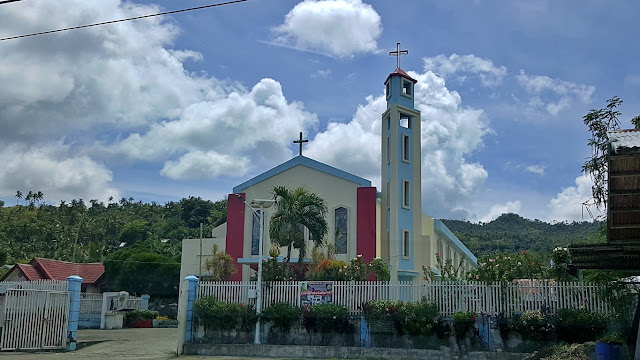







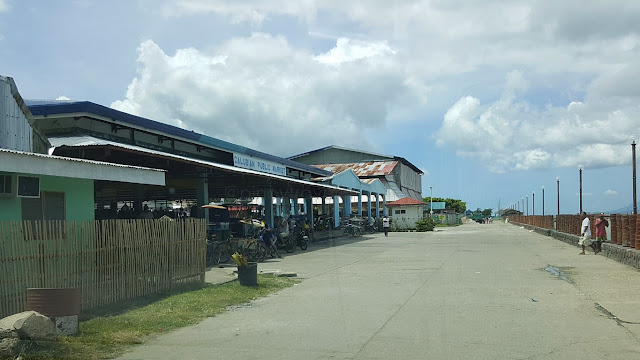
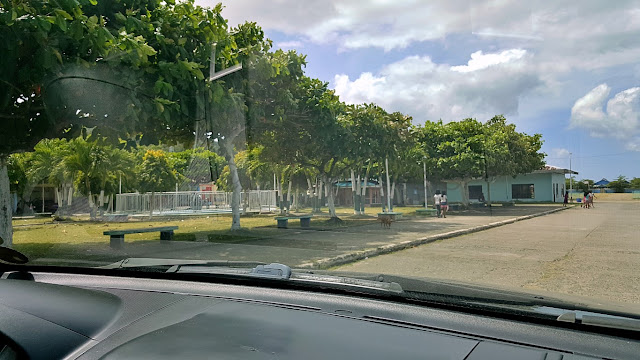
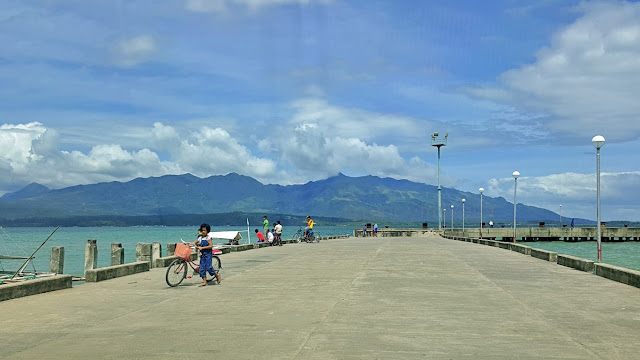

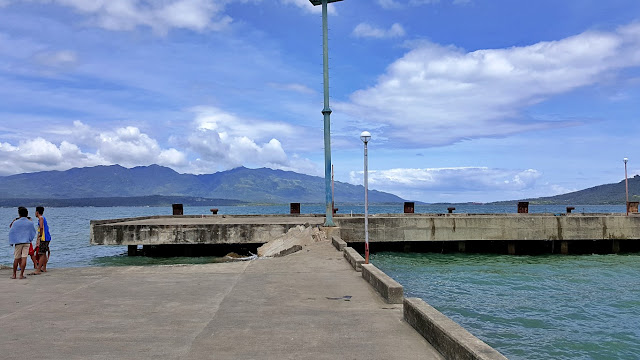
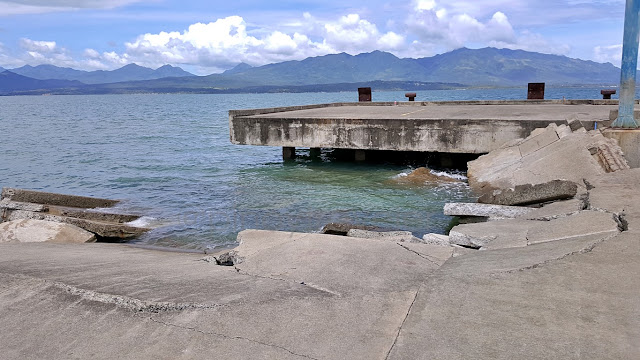
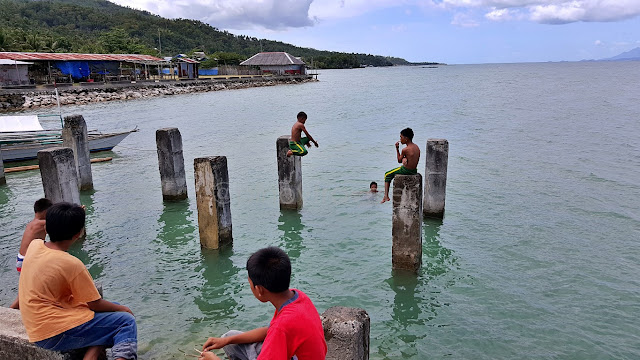

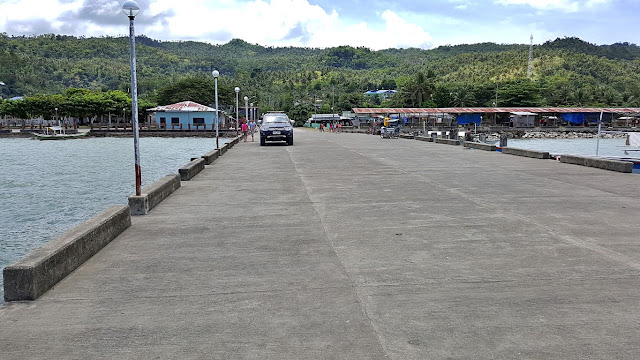
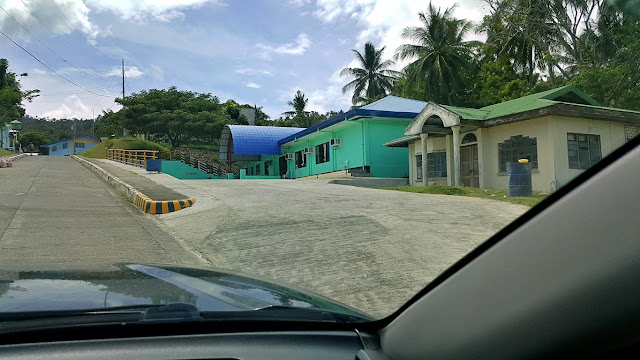
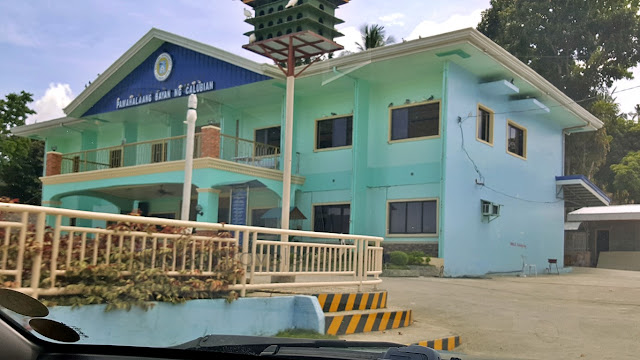
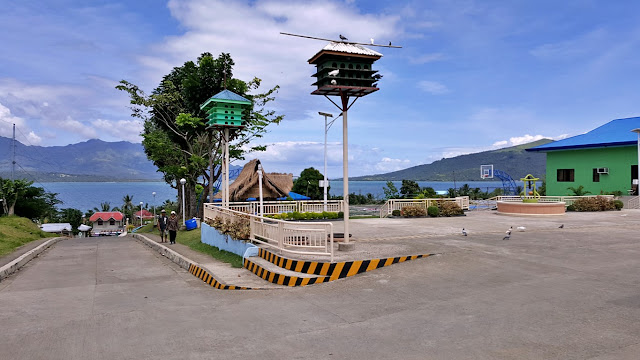
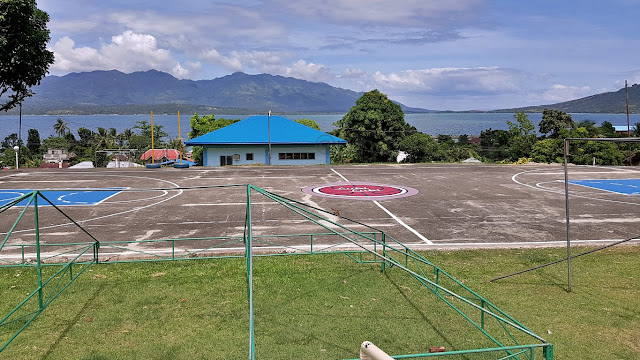
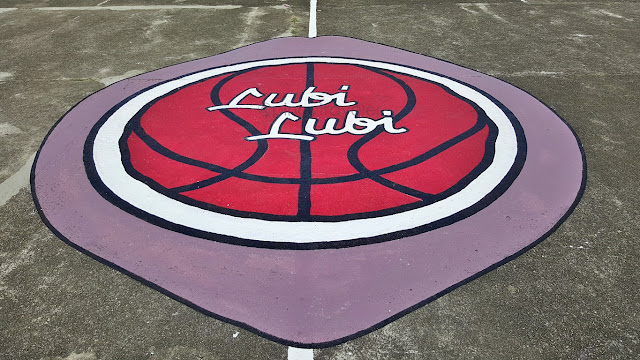
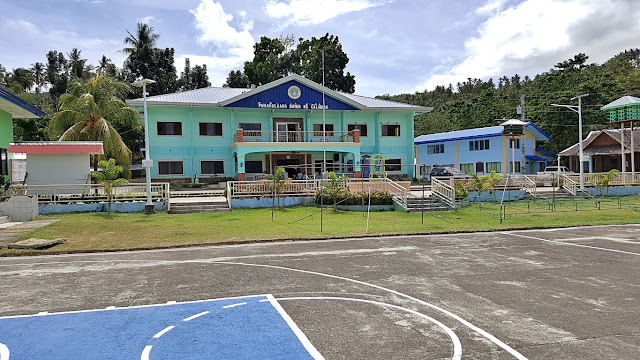

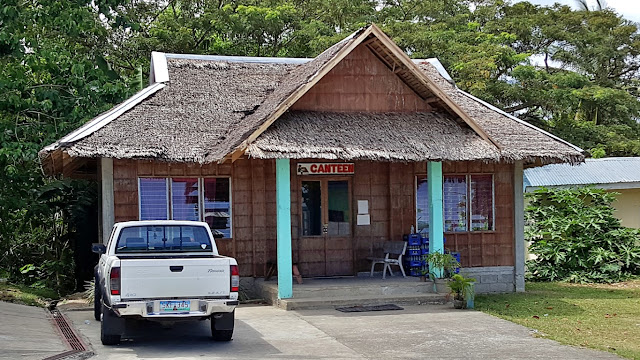






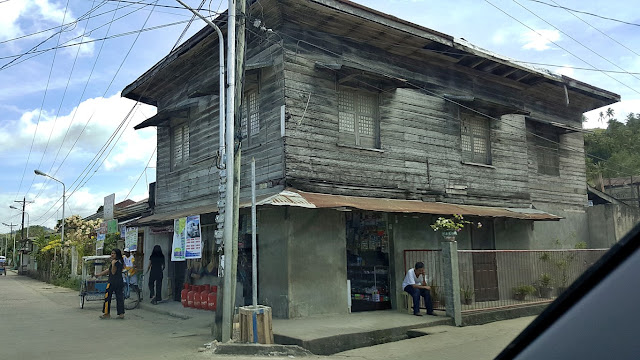
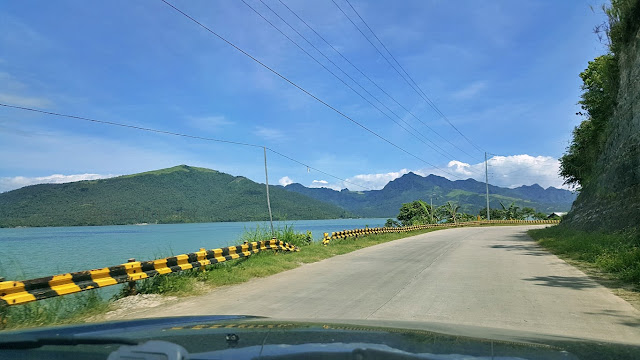



Comments
Post a Comment